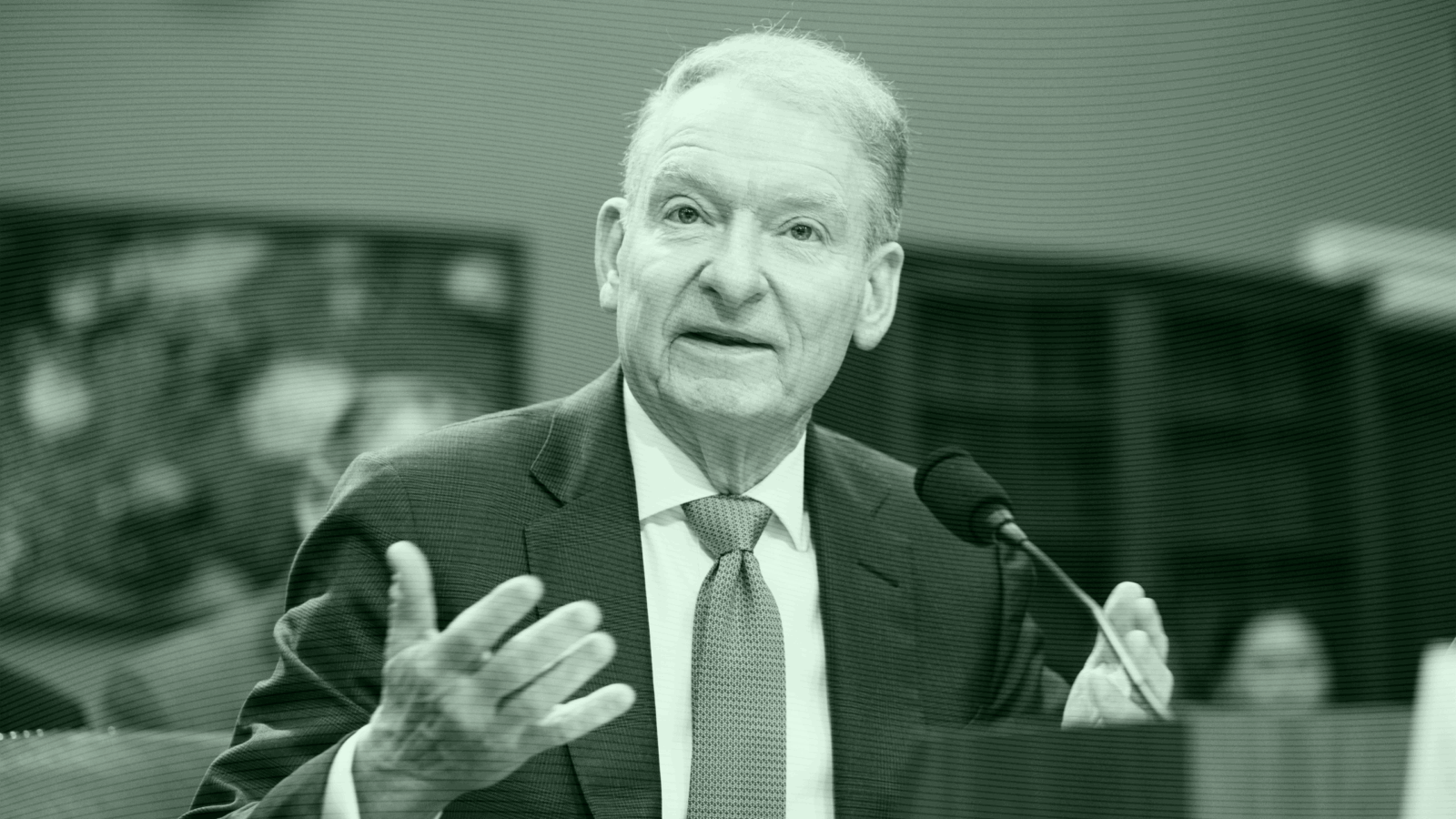Good morning.
Push it to the limit … of which there is none.
Sometimes a piece of misinformation goes out into the ether, and before you know it, everyone thinks it’s true. (Been on social media lately?) Focus Partners Wealth Chief Planning Officer Jeff Levine has a bone to pick with one such fallacy. “This week, I’ve seen a lot of posts about the 529 contribution limit of $19,000,” he posted on LinkedIn. “Except that’s not the limit. In fact, in most cases, there really is no practical limit on how much someone can contribute.” Levine said the confusion likely came from the fact that $19,000 is the 2025 annual gift tax exclusion limit, which can go toward a 529 contribution.
It just goes to show that you can’t trust everything you read on the internet. We know: Crazy, right?
What the SEC’s Scrapping of Biden-Era Proposals Means for Advisors

The SEC is letting everyone know there’s a new sheriff in town.
The Securities and Exchange Commission withdrew more than a dozen proposals put forth during Biden-era SEC Chair Gary Gensler’s tenure last week. At the same time, the agency announced multiple senior-level appointments that are expected to influence everything from trading oversight to registered investment advisors and product guidance. The moves signify that current Chair Paul Atkins is ready to bring a light regulatory touch back to wealth management and the financial industry as whole.
“This ain’t Gensler’s SEC,” said Bill Singer, a lawyer with more than 40 years’ experience in securities law. “The appointments are in furtherance of deregulation and putting on a more business-friendly and right-wing face.”
Who’s Who?
The SEC named Brian Daly as director of the Division of Investment Management effective July 8. Daly most recently served as a partner at law firm Akin Gump Strauss Hauer & Feld LLP, where he guided advisors on legal and compliance programs as well as operational and trading issues. Additionally, the agency named Jamie Selway as director of the Division of Trading and Markets. A few old faces are returning to the SEC, too:
- Corallium Advisors founder and former Ernst & Young partner Kurt Hohl was named chief accountant effective July 7. He previously served on the SEC from 1989 to 1997.
- Erik Hotmire took over as chief external affairs officer on Monday and previously served as a senior advisor during the George W. Bush administration.
“The expectation was that we were going to get a batch of lightweight political appointees, and we’re not,” Singer told Advisor Upside.
Rules? What Rules? The SEC also withdrew 14 proposals made under Gensler that would have provided guidance on predictive data analytics, RIAs’ cybersecurity responsibilities, advisors’ outsourcing requirements and more. There’s danger in both over-regulation and under-regulation, Singer said, adding that helping the wealth management industry flourish while also better protecting the public is a complex task. “The hope is that vulnerable investors — the widows, the orphans, the individuals [in] retirement, the financially undereducated — are protected by the federal government,” he said. “The big boys can fend for themselves.”
The Retirement Plan Too Many Advisors Still Ignore

The solo 401(k) lets self-employed clients contribute more than any IRA. It works for freelancers, solopreneurs — anyone with 1099 income. But most advisors don’t even mention it.
Why? Because there’s too much paperwork, too much friction.
Betterment has fixed that for good. Their solo 401(k) is:
- Fully digital.
- Carries no setup fees.
- Imposes no account minimums.
And the onboarding process? It’s paperless. Advisors get a clean dashboard. Clients get Roth and traditional options, spouse participation, and automated investing.
Self-employed workers are the fastest-growing segment of the economy, and they’re underserved. The solo 401(k) is what they need, now.
You know the score: advisors who can show clear-cut tax benefits and make the process painless are the ones who win — and keep — relationships.
Wells Fargo’s Hot on Energy, Financials. Not so Much on Consumers
It’s safe to say things are starting to look up for Wall Street’s top analysts.
Like many in the industry right now, Wells Fargo is rather optimistic about the second half of 2025 and beyond. The first half of the year may have been mired in uncertainty, volatility and tariff talk, but the bank holds out hope that those may encourage economic growth and better opportunities for investors. The wirehouse outlined where it intends to allocate investment over the next year and a half during a midyear outlook event that may provide food for thought as advisors rebalance client portfolios toward the back half of the year.
It’s All About AI
Among the favorable investment opportunities that Wells Fargo has identified for the next 18 months are energy, communications services, financials, and utilities. Much of the projected growth is expected to come from advancements in artificial intelligence and semiconductor technology, said Tracie McMillion, Wells Fargo’s head of global asset allocation strategy. The bank’s exposure to those sectors will mainly come via US large- and mid-cap equities, but investors should remain open to foreign markets, she added. Other areas of optimism include:
- Healthcare, real estate, and materials are areas where Wells Fargo remains neutral but says growth is possible.
- Aerospace and defense, which may benefit from geopolitical upheaval and uncertainty.
“While the US has been the clear winner in artificial intelligence, certain other countries are gaining some ground, so we encourage investors to seek diversification across geopolitical boundaries,” McMillion said during a virtual event last week.
Window Shopping. Not all sectors are created equal, however, and Wells Fargo sees two in particular as poorly positioned over the next year and a half. The wirehouse says investments in consumer discretionary, including leisure products and apparel, will be unfavorable as they are industries that will be most affected by tariffs. “That’s part and parcel of the [federal] policy right now,” said Sameer Samana, Wells Fargo head of global equities and real assets. “It’s going to lead to fewer cheaper goods. Consumers will struggle with that, and companies will struggle with that.”
While consumer staples like beverages and tobacco may not be as impacted by tariffs as other items, Wells Fargo doesn’t see much upside. “Those are areas where we see consistent streams of income coming into those companies, but not really so much potential for growth,” McMillion said.
- Future Proof Festival: Join the Largest Event for RIA Decision-Makers.
- Subscribe To ETF Upside For Free — smarter ETF strategies start right now.
Millennial Women Are Investing More Money Earlier, Says Schwab

The “Millennial pause” definitely doesn’t apply to investing.
Millennial women — those between the ages of 28 and 43 — have been investing at an earlier age than their Baby Boomer and Gen X counterparts, according to the results of Schwab’s annual Women Investors Survey. They are also much more likely than older generations of women to invest in crypto, options and alternatives.
Since women are the primary beneficiaries of the ongoing “Great Wealth Transfer” — in which $124 trillion is set to change hands — understanding how they plan to invest is key to understanding future trends. Advisors will also need to cater to women’s investment preferences if they want to retain them as clients, experts said.
A Millennial Moment
Millennial women began investing at age 27 — nearly a decade earlier than Boomer women did at age 36, per the Schwab data. Millennial women are also significantly more likely to invest in cryptocurrencies (51%), options or futures (28%), and alternatives (24%) than Gen X and Boomers; of Boomer women, only 7% and 8% have assets in crypto and alternatives, respectively. Millennial women are also more likely to find the fun in investing:
- 51% of Millennial women “enjoy investing” compared with 39% of Gen X and 18% of Boomer women.
- 36% of Millennial women said one reason they started investing was “to learn how to invest,” compared with 23% of Gen X and 11% of Boomer women investors.
Cary Carbonaro, the women and wealth ambassador for Ashton Thomas Private Wealth, said the data shows that women are less afraid to dive into the world of investing. “I’m happy that we’ve got numbers moving in the right direction. It means that women are less risk-averse, they’re more open to the market,” she told Advisor Upside. “What’s really interesting is that it’s happening already now, with the younger women.”
Valuing Values. When speaking to women clients, Carbonaro said certain types of investments tend to have a higher appeal. With first-time women investors, she said, large-caps and S&P 500 indexes are a good place to start but more experienced investors might want their portfolios to reflect their values. “My clients who move up the scale, I also [say], ‘Hey, do you want to put your values in your portfolio?… If you hate guns, we can take guns out of the portfolio,’” Carbonaro said.
Still, women — who value long-term relationships with their advisors — are working with them much later in life, with 35% not hiring one until age 45, according to a recent McKinsey report. This heightens the risk of missing out for firms that don’t reach younger clients early. “Money equals freedom and power,” Carbonaro added, “and women need more of all of that.”
Extra Upside
- ‘Could Be Better.’ BofA CEO says Merrill Lynch’s FA recruitment is ‘not a lot, but enough.’
- Americans Abroad. Advisors look internationally for diversification as US equity and fixed-income ETFs make modest gains.
- A Smarter Way To Offer Solo 401(k)s. Betterment makes it easier to attract self-employed clients — fast setup, intuitive tools, zero friction. Make Betterment’s solo 401(k) work for you.*
* Partner
Advisor Upside is edited by Sean Allocca. You can find him on LinkedIn.
Advisor Upside is a publication of The Daily Upside. For any questions or comments, feel free to contact us at advisor@thedailyupside.com.
Disclaimer
*Paid non-client.Views may not be representative. See App Store and Google Play reviews. Learn More.

